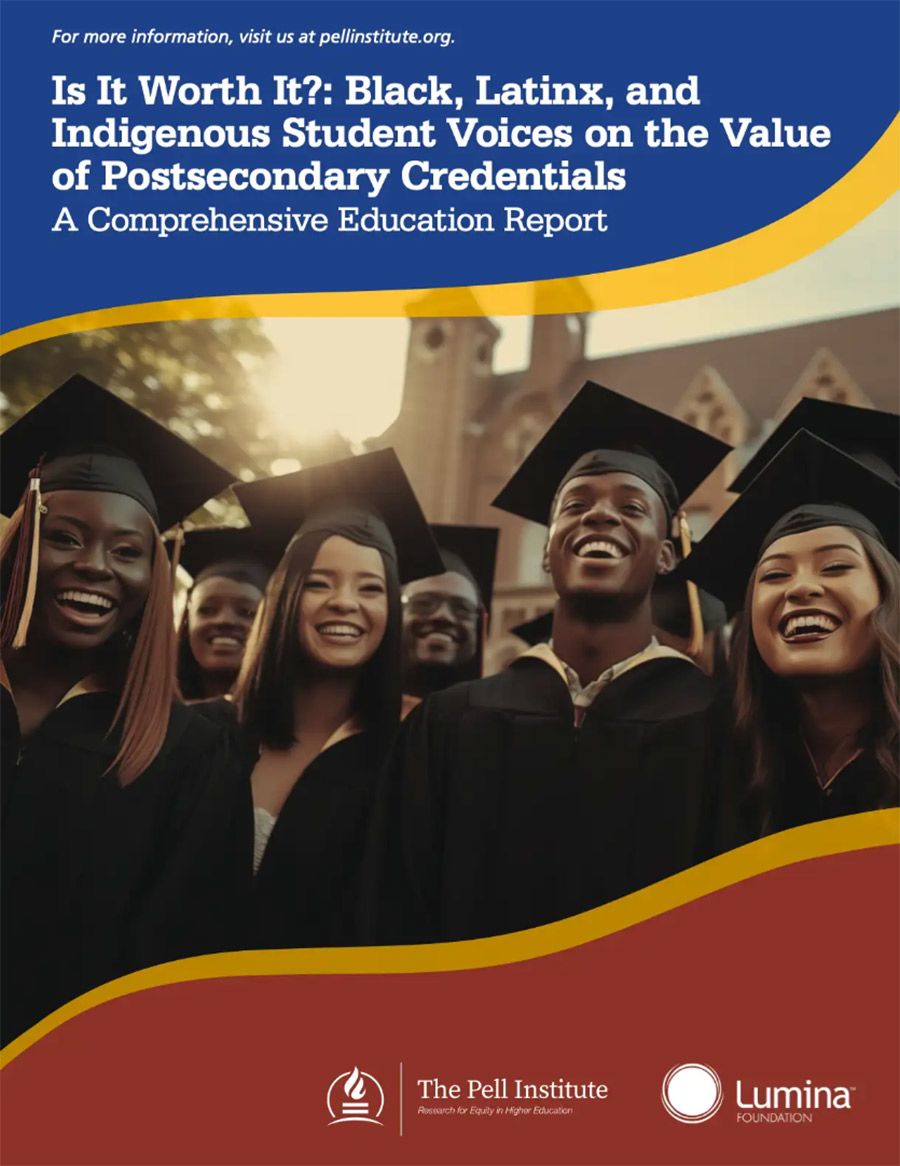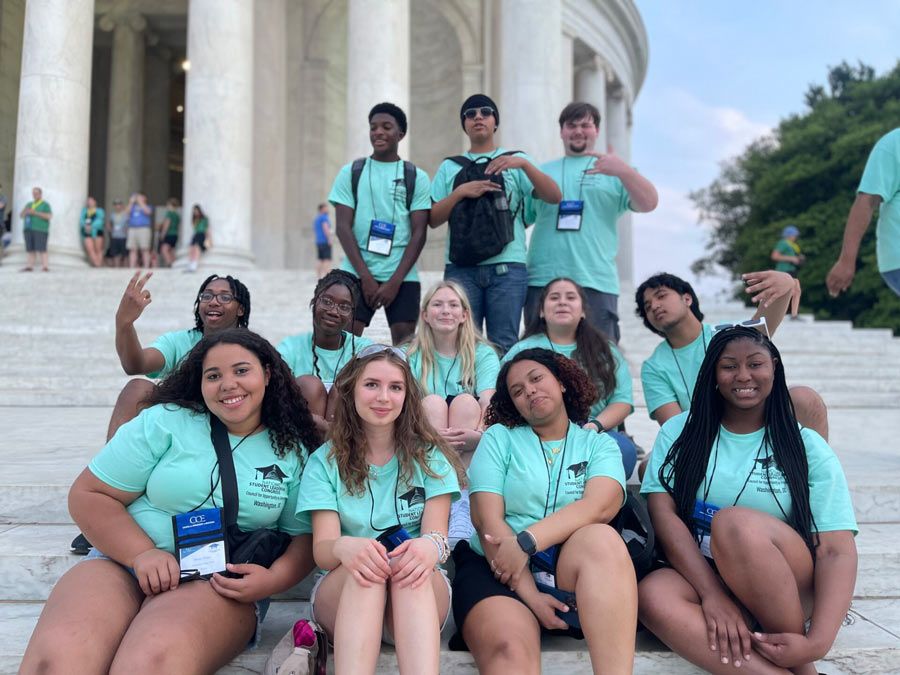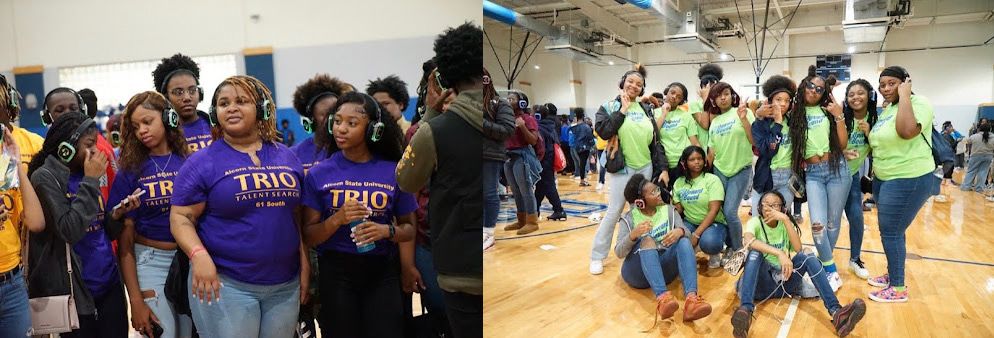Despite high-cost toll, Pell Institute study finds students of color believe higher education well worth the investment
By David Weldon

Tuition rates for many colleges and universities are at dizzying heights, as is the amount of debt that students often carry in order to pay for a higher education. But despite those challenges, a majority of students believe that the promised returns on those investments are well worth it, especially among Black, Latinx, and Indigenous students.
That is the finding of a new study released on October 16, 2024, from The Pell Institute for the Study of Opportunity in Higher Education (“Pell Institute”) entitled, “Is College Worth It?: Black, Latinx, and Indigenous Student Voices on the Value of Postsecondary Credentials.”
The groundbreaking Pell Institute study provides insights into how Black, Latinx, and Indigenous students perceive the value of their postsecondary education from a holistic perspective, including the economic and non-economic benefits of attainment. The study focused on students in TRIO programs – federally funded college access interventions designed to support the success of first-generation, low-income students and those with disabilities.
The study revealed that Black, Latinx, and Indigenous TRIO students consider higher education as a critical pathway to economic mobility and stability. But, it can be easy to short-change the broader value of a college degree when viewed strictly in terms of post-graduation job offers and salary potential.
The study recommends that ongoing discussions about the value of higher education take into account its more personal and intangible advantages. Such discussions should explore the benefits that higher education can provide for personal growth and fulfillment as well as societal contributions.
In response, Dr. Stephanie Breen and Nicole Brunt, Research Associates at the Pell Institute, discuss how policymakers, institutions, and educators should broaden the definition of value beyond traditional metrics, focusing also on personal, social, and civic benefits.
Dr. Stephanie Breen and Nicole Brunt, Pell Institute Research Associates
Dr. Stephanie Breen and Nicole Brunt, Pell Institute Research Associates
With the release of the new study, what are the top key messages for institutions of higher learning, policymakers, education researchers, and philanthropic foundations?
Breen: The key takeaway is that we should broaden our understanding of the value of higher education by recognizing and addressing the barriers marginalized students face, so they can fully benefit from and maximize the benefits associated with their attendance and attainment. Institutions, policymakers, and philanthropic foundations should work to remove obstacles that limit access not only to economic mobility, but also to personal and social growth. This requires investing in affordability efforts, mentoring opportunities, TRIO programs, and paid learning opportunities to ensure that Black, Latinx, and Indigenous students can thrive without unsustainable debt.
It's also crucial to apply an equity lens and view students as whole individuals with intersecting identities that influence how they experience and value their education. We found that their perceptions of value were deeply personal and unique, driven by their lived experiences, identities, upbringing, and culture. Using a holistic approach when working with students will provide us with additional insights on how to forward and tap into existing programs and practices that best align with their needs.
What are perhaps the most surprising findings in the new research?
Brunt: One surprising observation was the consistency in responses. Most participants shared similar feelings about their college experiences, regardless of their backgrounds. This indicates that, despite the rising costs, students still believe that college is 'worth it.'
Breen: The new research also reaffirms what we’ve long understood about the multifaceted value of higher education for historically marginalized students. What stands out is the need to translate these insights into actionable programs and policies that capitalize on the benefits students see in their college experience. This includes increasing investment in interventions that benefit students, like participating in TRIO programs at their respective institutions. Top of Form
Student debt continues to rise for many, along with tuition rates at most colleges and universities. These realities are prompting some to question the value of higher education. How would you go about convincing naysayers that they’re wrong?
Breen: It's important to acknowledge that concerns about student loan debt and rising tuition rates are absolutely valid, particularly for historically marginalized populations such as Black borrowers who are disproportionately impacted by these financial burdens. The data clearly demonstrates the need for systemic reform in higher education financing. When financial barriers are reduced or removed, the holistic benefits of higher education become more accessible.
College is not just an economic investment; it cultivates critical thinking, problem-solving, and interpersonal skills that are essential for navigating complex, real-world challenges. Students also gain access to new networks and opportunities to engage with diverse perspectives and ideas, which are invaluable in both their personal and professional development. If we focus solely on the cost and neglect these other benefits, we risk overlooking the transformative potential of higher education. By addressing affordability and making systemic changes, we unlock the full range of advantages that college offers.
Aside from the potential value to individual students, in what ways does higher education contribute to the public good and how can that message be best conveyed?
Brunt: Higher education contributes to the public good by increasing employment opportunities for graduates, which leads to higher tax revenues. When more people are employed and earning higher wages, they pay more in taxes, which, in turn, supports essential public services and infrastructure. This not only benefits individuals but also strengthens the overall economy, providing resources that help improve communities and the country as a whole.
People with more education are also more likely to vote, volunteer, and are less likely to commit crimes. So, considering the snowball effect, with more people receiving the holistic benefits of higher education and becoming positive influences for friends, family members, and potential children, these loved ones become the next set of college-educated role models. This increase in college-educated people contributes to our nation’s economic and civic well-being.
Video: Is College Worth It? Students of Color Speak Out
The report recommends increasing funding under federal TRIO and other support programs. How can this be done in ways to help close equity gaps among diverse student populations, and to help under-represented students thrive both academically and personally?
Breen: Although years of empirical research, including our own, has demonstrated the positive impact of TRIO programs on marginalized populations in higher education, these programs currently reach only a fraction of the eligible population due to constrained financial resources. With more funding, these programs can scale to reach a broader segment of eligible students. Expanding services would allow TRIO to provide comprehensive, wraparound support, including holistic advising, mentorship, and professional development. This would ensure that more students receive the academic, social, and personal resources they need to succeed both in and beyond college. By having this comprehensive support, students are better positioned to access and benefit from the full range of opportunities and advantages that a college education provides.
Financial challenges obviously impact the ability of students to benefit fully from their education. What role can policymakers play in easing these barriers?
Breen: College affordability remains a significant barrier to accessing the full benefits of higher education, especially for marginalized communities. As the report outlines, addressing this requires a multilayered approach. At the federal level, increasing Pell Grants and expanding emergency financial aid are essential to alleviating financial pressures. State governments should invest in comprehensive support systems that address key areas like housing, food insecurity, and mental health.
Meanwhile, institutions must integrate affordable housing and meal programs to meet students' basic needs. Including student voices when evaluating these initiatives is crucial to ensuring that solutions are responsive and effective. This combined approach can help students from marginalized backgrounds leverage their degrees without enduring long-term financial hardships.
Brunt: Policymakers need to realize that each year there is an increase in the percentage of children in our public school system coming from low-income backgrounds. These children represent our future, so policymakers must ensure that these children have access to the resources they need to help them navigate through our nation’s higher education system. Otherwise, the alternative will result in our nation being a poorer country, both economically and socially.
Conclusion
A significant reason why the cost of a higher education garners so much attention is that many students and families simply don’t understand the full scope of what is involved in paying for one, thus making it seem impossible. The report found that students encounter challenges, including unexpected personal and education expenses, tuition increases, and limitations on what financial aid will help with. Colleges and universities should better inform students about what to expect and take deliberate steps to assess how things are going in their college journey regularly.
The Pell Institute report recommends several measures that institutions, educators, and policymakers should adopt to help improve the college experience, deliver on the multifaceted benefits of higher education attainment, and reduce the associated financial burdens. For institutions and educators, these include:
- Integrating culturally-responsive career development into advising and curriculum
- Implementing financial literacy and empowerment programming
- Integrating TRIO into student success initiatives across campus
- Establishing basic needs services hubs for accessibility
For policymakers, recommendations include:
- Establishing state-level financial literacy campaigns
- Freezing and capping tuition rates to ensure equitable access
- Expanding precollege and college TRIO programs
- Creating career development and incentive programs for Black, Latinx, and Indigenous students
There are several other specific measures that institutions, educators, and policymakers can support to help take the sting out of paying for a higher education mentioned in the report. The bottom line is that the first step is to broaden the definition of what makes for a successful educational experience and focus on the wider personal, social, and collective dimensions of value that a higher education can provide.
This custom content is sponsored by The Pell Institute for the Study of Opportunity in Higher Education and developed by Inside Higher Ed's sponsored content team. The editorial staff of Inside Higher Ed had no role in its creation.








